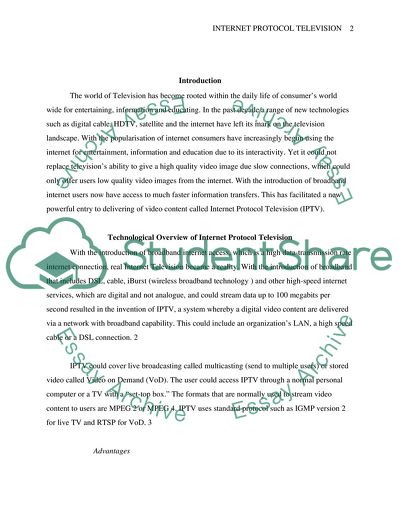Cite this document
(Internet Protocol Television: A New Delivery Method for Video Content Term Paper - 1, n.d.)
Internet Protocol Television: A New Delivery Method for Video Content Term Paper - 1. Retrieved from https://studentshare.org/technology/1705500-emerging-technologies
Internet Protocol Television: A New Delivery Method for Video Content Term Paper - 1. Retrieved from https://studentshare.org/technology/1705500-emerging-technologies
(Internet Protocol Television: A New Delivery Method for Video Content Term Paper - 1)
Internet Protocol Television: A New Delivery Method for Video Content Term Paper - 1. https://studentshare.org/technology/1705500-emerging-technologies.
Internet Protocol Television: A New Delivery Method for Video Content Term Paper - 1. https://studentshare.org/technology/1705500-emerging-technologies.
“Internet Protocol Television: A New Delivery Method for Video Content Term Paper - 1”, n.d. https://studentshare.org/technology/1705500-emerging-technologies.


